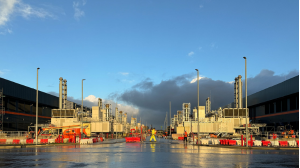5 Tips for Getting to Grips with RMM

The "Rail Method of Measurement" (RMM) was first published by Network Rail in 2014 with the intention of providing the common language for comparative measurement, valuation and analysis of railway engineering construction projects.
Fast forward seven years, it is now utilised throughout Network Rail, its supply chain and beyond. Key stakeholders such as the Office of Rail Regulation are attuned to RMM and now expect relevant funding submissions to be in this format as standard.
But if you have not heard of this industry standard, then here are 5 essential tips for understanding RMM:
Tip one: You can only improve what you measure
Consistency and comparability is intrinsic to any Quantity Surveyor or Commercial Manager. Originally focused on quantifying inputs such as plant, labour, materials and time, measurement has evolved to defining outputs such as safety, operational performance, service provision and, most recently, behaviours. RICS Construction journal (November/December 2016).
RMM has been written to provide a basis for the elemental cost analysis, measurement and valuation of all costs of a project, whether they are incurred by the infrastructure owner or the contractor thus providing, if so desired, Total Cost Management of Projects.
Tip two: Understand the structure
The suite is collectively referred to as the Rail Method of Measurement (RMM), with 3 key volumes:
- Volume 1: Cost Planning & Measurement of Rail Infrastructure Works
- Volume 2: Standard Rail Activity Cost Models
- Volume 3: Cost Planning & Measurement of Maintenance to Rail Infrastructure.
It was initially produced as part of the Commercial Directors Forum and an industry working group including industry stakeholders, key suppliers and professional institutions.
Tip three: Learn how it compares
Methods of measurement are not new, they are the benchmark of many other similar industries . Widely recognised examples include the New Rules of Measurement (NRM) suite from the RICS, or Civil Engineering Standard Method of Measurement 4 from the Institution of Civil Engineers.
As with all industry standards, RMM provides detailed information, classification tables and rules for measuring works. This uniform approach is essential in order to facilitate industry wide consistency and benchmarking, to encourage the adoption of best practice and to help avoid disputes.
Tip four: Know the benefits
The rail infrastructure sector has been plagued with bad press due to horror stories of cost hikes and programme overruns that a standardised approach may have helped avoid.. Network Rail Commercial Projects Director, Steven Blakey, explained to the RICS how RMM will help the industry address four key questions:
- Should cost: this question concerns the ability to provide consistent and credible advice on outturn cost ranges during business planning and procurement phases.
- Will cost: this covers the ability to provide active commercial stewardship to influence and predict accurately the outturn costs during delivery.
- Did cost: this deals with the validation of outturn costs relative to final scope and constraints, client behaviours and supplier performance.
- Why: this seeks an illustration of segmented spend, associated cost drivers and efficiency opportunities, through informed analysis of data and benchmarking.
Providing a standardised structured approach will allow the industry to directly address these key areas of concern, providing a more effective methodology for cost modelling of future rail infrastructure investments.
Tip five: Focus on the data challenge
Network Rail's focus is on promoting consistency and clarity of costs through standard approaches to measurement, cost modelling and benchmarking.
To achieve this, data is fundamental in ensuring sufficiently detailed cost capture and analysis throughout the industry. As part of this, Network Rail has been developing a unit-cost modelling capability with a data architecture directly aligned with the RMM.
Gather supports this data challenge by ensuring that all information captured through our platform is aligned with RMM. This provides a detailed analysis of the key cost components required for modelling and benchmarking. A thorough comparison of planned elements against actual events and expenditure also allows industry professionals to understand deviations from the model and better inform future benchmarking.
If you want to automate the capture and analysis of this essential industry data, then find out more about Gather's actionable insights.
Key takeaways
Related blogs you may like
Stay ahead of the curve
Our monthly email newsletter keeps you up-to-date with best practices in project management, contech implementation and NEC4.




